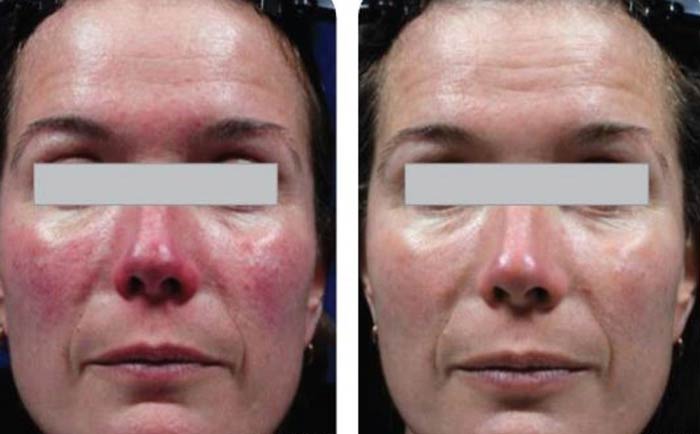
What Causes Rosacea
What Is Rosacea ?
If face looks like you’re blushing and you are getting bumps that are a bit like acne, you might have a skin condition called rosacea.
The biggest thing you’ll notice is redness on your cheeks, nose, chin, and forehead. Less often, the color can appear on your neck, head, ears, or chest. After a while, dilated and broken blood vessels might show through your skin, which can thicken and swell up.
As a result up to 50% people with rosacea also get eye problems like redness, swelling and pain.
Other symptoms you may get are:
- Stinging and burning of your skin
- Patches of rough, dry skin
- A swollen, bulb-shaped or potato shaped nose
- Larger pores
- Dilated blood vessels on your eyelids
- Bumps on your eyelids

Problems with seeing:
Your rosacea symptoms can come and go. They might flare up for a few weeks, fade, and then come back. Getting treatment is a must, so make sure you see your doctor. If you don’t take care of your rosacea, redness and swelling it can get worse and might become permanent.
A few things that may play a role are:
- Genes- Rosacea often runs in families.
- Blood vessel diseases-The redness on your skin might be due to problems with blood vessels in your face.
- Sun damage could cause them to get wider, which makes it easier for other people to see them.
- Mites- They’re tiny insects. A type called Demodex folliculorum normally lives on your skin and usually isn’t harmful. Some people, though, have more of these bugs than usual. Too many mites could irritate your skin.
- Bacteria- A type called H. pylori normally lives in your gut. Some studies suggest this germ can raise the amount of a digestive hormone called gastrin, as a result it might cause your skin to look flushed.
Some things that often trigger rosacea are:
- Sunlight
- Hot or cold temperatures
- Wind
- Stress
- Hot baths
- Hot or spicy foods or drinks
- Alcohol
- Intense exercise
- Medicines such as blood pressure drugs or steroids you put on your skin
Also try to follow few tips every day to help in fading the redness on your skin:
- Put on sunscreen. Use one that’s SPF 30 or higher whenever you go outside. Also wear a wide-brimmed hat that covers your face.
- Use only gentle skin care products. Avoid cleansers and creams that have alcohol, fragrance, witch hazel, and other harsh ingredients.
- After you wash your face, gently blot your skin dry with a soft cloth.
- Use a moisturizer. It’s especially helpful in cold weather. Also low temps and wind can dry up your skin.
- Massage your face, gently rub your skin in a circular motion. Start in the middle of your face and work your way outward toward your ears.
- Cover up- Put a green-tinted cover-up on your face to hide redness and broken blood vessels.
It’s important to care for your emotions along with your skin problems. If you feel embarrassed by the way you look, or you think it’s starting to affect your self-esteem, talk to your doctor.



Post a comment